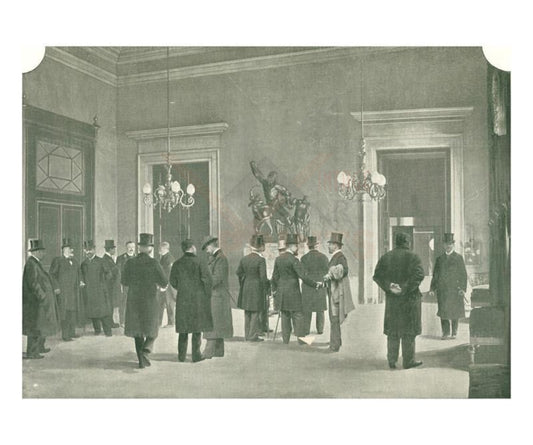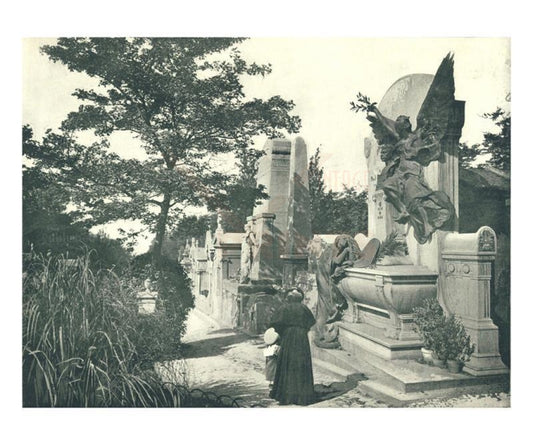Collection: Panorama of Paris
Following Napoleon's exile, after his final defeat at Waterloo, France faltered under a string of mostly inept rulers until a coup d'etat in 1851 brought a new emperor to power, Napoleon's own nephew, Napoleon III. During the 17 years of his rule, he oversaw the construction of a flashy new Paris, with wide boulevards, sculptured parks and - not insignificantly - a modern sewer system. Napoleon III and his civic planner, Baron Haussmann, gave us the Paris we see today, for the most part. Almost all of medieval Paris was eradicated, but bits of it remain, mostly in the Marais, and in a section preserved inside the Louvre. Like his namesake uncle, however, this Napoleon and his penchant for pugnacity led to a costly and eventually unsuccessful war, this time with the Prussians in 1870. When news of their emperor's capture by the enemy reached Paris, the masses took to the streets, demanding that a republic be created. Despite its bloody beginnings, the Third Republic ushered in the glittering halcyon years of the belle epoque.
The Belle Epoque was famed for its Art Nouveau architecture and a barrage of advances in the arts and sciences. The emblematic Eiffel Tower was born of this time (1889). The Statue of Liberty was sent to America in this time (1886). By the 1930's, Paris had become a worldwide center for the artistic avant-garde and in a way became the world capital for free-thinking intellectuals. This era was cut short by the Nazi occupation of 1940, and Paris remained under Germany's rule until August 25,1944. The Allied forces that retook the city were spearheaded by Free French units in order to give the French the honor of liberating their capital. Quite a bit of negotiation among the British and American generals, and Charles De Gaulle’s leadership allowed this. After the war, Paris regained its position as a creative hotbed and nurtured a revitalized liberalism that reached a crescendo in the student-led 'Spring Uprising' of 1968. The Sorbonne University was occupied, barricades were erected in the Latin Quarter, and some 9 million people nationwide were inspired to join in a paralyzing general strike, drawing attention to their increasing dissatisfaction with the rigidity of French institutions.
-
Bois de Boulogne, Paris
Regular price From $39.00 USDRegular priceUnit price / per -
Boulevard Des Capucines
Regular price From $39.00 USDRegular priceUnit price / per -
Chambre de Napoleon
Regular price From $39.00 USDRegular priceUnit price / per -
Circulation Retablie
Regular price From $39.00 USDRegular priceUnit price / per -
Entree du Chateau de Versailles
Regular price From $39.00 USDRegular priceUnit price / per -
Fontainebleau: Gallery of Francis
Regular price From $39.00 USDRegular priceUnit price / per -
Gros Pavilion: Le Chateau de Fontainbleau
Regular price From $39.00 USDRegular priceUnit price / per -
L'Obelisque de Louqsor (Luxor Obelisk)
Regular price From $39.00 USDRegular priceUnit price / per -
La Salle Du Trone (Napoleon's Throne)
Regular price From $39.00 USDRegular priceUnit price / per -
La Seine a Paris
Regular price From $39.00 USDRegular priceUnit price / per -
Le Salon de la Paix a Palais-Bourbon
Regular price From $39.00 USDRegular priceUnit price / per -
Pere Lachaise: Le Grande Avenue
Regular price From $39.00 USDRegular priceUnit price / per -
Place Blanche, Paris
Regular price From $39.00 USDRegular priceUnit price / per -
Place de la Concorde, Paris
Regular price From $39.00 USDRegular priceUnit price / per -
The Grand Cascade of Saint-Cloud
Regular price From $39.00 USDRegular priceUnit price / per















